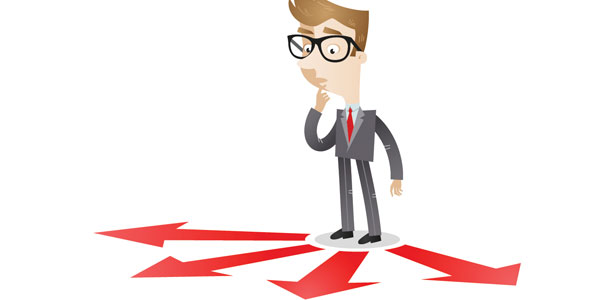Scientific and technological progress of our time is reflected in all areas of services not by chance. For the benefit of society, each of its representatives works through the implementation of specific labor activities in various structures. Factories, firms, enterprises, institutions, all kinds of organizations use certain services of the labor staff, which undertakes to perform the tasks proposed for action for the corresponding salary. But the fact is that not a single labor activity, not a single labor collective, and not a single official labor relationship, is implemented without a set of job descriptions governing such relations. What determines the need for this instrument of legal relations and employee management? And what is the essence of the main sections of the job description of an employee of the company?
Job description: essence and concept
Probably, if at one enterprise all the full-time units fulfilled the list of identical functional duties, it would hardly have existed for a long time on the labor market as a full-fledged business entity.
The positions and posts held by employees at various levels of the hierarchy of staffing, therefore, differ from each other because they are endowed with a different degree of responsibility, rights and functions. It is for this that sections of the job descriptions of specialists of different levels and qualifications are developed. It is precisely in this that their essence lies in the context of the documentary organizational and legal base of the labor activity of workers of various kinds of institutions. But what is it and what sections does the job description consist of?
Job description is an official document of an enterprise that governs the legal relationship and the division of labor responsibilities of employees with the establishment of their professional rights, scope, functions and relationships with other departments of a particular enterprise. In other words, this document gives the employee the opportunity to be brought up to date regarding the tasks that he undertakes to take to execution, and his own capabilities, and organizational freedoms, which are agreed with his immediate leadership.

What is the need to develop a job description
Why is it so important in modern society to distinguish and document the functional load of each employee and to develop a specific job description for each new position? The main sections of each such document provide an opportunity to officially fix the degree of responsibility, the list of tasks assigned to the employee and his own rights and freedoms in the course of his work. What are the main goals achieved by the employer, who develops such instructions for his subordinates? Among them:
- Rational distribution of functional duties - the instruction determines the nature of the employee's activity in the context of the requirements for his work.
- Determination of threshold boundaries in the time period given for the execution of orders.
- Improving the reliability of tasks assigned to performance.
- Improving the socio-psychological atmosphere in the team and eliminating the threats of conflict.
- A clear distinction between the functional relationships of the employee and his relationships with other employees.
- The specifics of the legal freedoms of man, as a staff unit of a particular enterprise.
- Increasing personal and collective responsibility.
- Encouraging and stimulating the employee to work effectively through material rewards.
- Organization of an even distribution of labor for all employees.

Job description structure
Acquaintance of an employee with his main legal document in his new place of employment occurs on the first day when the employee takes up his duties. The legislation stipulates that the sections of the job description of the Russian Federation today should be mandatory assigned to each post, approved by the director of the enterprise and provided to familiarize them with a specific employee applying for this position. Each instruction is accompanied by a print of the seal of a particular institution. Visually, this document is one or more printed sheets of the standard “A4” format with a cap in the form of the name of the document, an angular visa of the approver, namely the director, in the upper right part, a list of the main sections of the job description and the consent of the employee acquainted with its contents in bottom left corner with the date of signing.
The very structure of this organizational-legal document is represented by several semantic subparagraphs. These are sections of the job description. Some of them are mandatory, some can be implemented by the head of the company additionally for his corporate purposes. Basically, a standard job description consists of the following sections:
- general provisions;
- function
- job responsibilities;
- the rights;
- a responsibility;
- communication on a post.

General Provisions Section
The document on the regulation of the employee’s labor activity at a particular enterprise begins with his name and the position of a full-time employee in the genitive case. Then comes the text of the job description section on general provisions in the form of their sub-item listing. Here, generalized information is concentrated on the name of the position to be occupied, indicating its personnel category and location, that is, hierarchical subordination in a particular unit. The first mandatory section of the job description includes data on:
- the name of the official post in the context of the staffing table with a breakdown of the basic information about him: here the name of a specific department, the employee’s affiliation with him and the level of subordination, as well as the category of personnel — chief, senior or ordinary contractor;
- the procedure for determining and removing from a post;
- the procedure for replacing a vacant seat during the absence of an employee due to vacation, decree, business trip;
- requirements for vocational training - it reveals the specifics of the required level of education and work experience; Also included here are data on the required work skills and abilities;
- a number of internal labor documentation that directly regulates the activities of the employee: this includes director's orders, instructions, instructions.
Feature Section
After the general provisions listed through subparagraphs, there is the following mandatory part: the second. In this section of the job description, we are talking about a list of those functions that an employee must perform in view of the official post held by him in a specialized specialty. It should be noted that most of the responsibilities of similar positions in different firms coincide. For example, the functions of an ordinary accountant of one trading company are very similar to the functions of the same accounting employee of another company, which also operates in the field of trade, and so on.They are both accountants, they both work with the sale of goods or services, they both make the same transactions within the framework of the established legislation of the Russian Federation. And yet, all sorts of variations that are part of the functional apparatus of the worker in his official position, there are a huge number. What is included in the content of the section of the job description about the functions of the employee can be found on the example of the job description of the cashier:
- cash transactions;
- carrying out operations with securities;
- maintaining a cash book;
- preparation of cash statements, and the like.

Job Section
Speaking about the third block of the legal document of an employee of the enterprise, which is called "Responsibilities", you can not confuse it with the second. The section of duties in the job description gives a more detailed list of those cases on the agenda that should be worked out by the contractor. And if functionally at different enterprises there can be approximately the same work scheme for standard divisions - the accounting department, the logistics department, the warehouse department, then regarding duties at different companies the same position can be divided in the way of performing different tasks. With all this, responsibilities and functions cannot be fundamentally different. But the section of the job description on duties regulates more specialized activities in this particular enterprise. According to them, the employee must comply with:
- the internal rules of the organizational and legal activity at the enterprise;
- terms of preparation and submission of documents for verification (analysis);
- ethical standards of relationships and communications between departments and units in the team;
- confidentiality of company data and trade secrets.
If we continue to give an example on the job description of the same cashier, we can distinguish the following duties:
- reception, accounting, issue and storage of funds;
- work with securities;
- receipt of cash and securities for the payment of salaries to employees and employees in the form of wages, bonuses, travel expenses, advance payments, and other expenses;
- maintaining registration of credit and debit cash orders in the cash book;
- reconciliation of actual amounts with data from the cash book;
- inventory of shabby notes and currencies;
- transfer of funds in the prescribed manner to collectors;
- conducting cash reporting.
In a word, in the section on obligations, information is presented more specific, more accurate, inherent in a certain enterprise in the conditions of real circumstances of its existence and conduct of business activities.

Rights section
Following the list of duties included in the employee’s mandatory daily routine, there is a section on rights in the job description. This is not surprising: in a number of requirements, tasks, specific conditions of the employee’s labor activity, there should be at least some information about what he may require from the enterprise, and not only what the latter requires of him. Here, an employee applying for a specific vacant position can familiarize himself with his freedoms and actions, which he can officially operate during the implementation of his labor activity. The section defines and lists the powers delegated to the employee, through the implementation of which he can ensure that he fulfills the tasks and duties assigned to him. What points can be attributed here? For example:
- the ability to make adjustments and suggestions in the course of resolving certain issues;
- the right to make decisions at one's skill level;
- coordination of design documents;
- taking part in meetings;
- obtaining information necessary for the performance of their work from other departments at the specialist level in their field of activity;
- the right to endorse a specific list of documentation;
- the right to control certain activities of employees of a particular department.
The formulation of the freedoms and powers of the employee makes it possible to determine the level of his responsibility, the items of which are assigned to a separate section.

Responsibility Section
The section of the job description on responsibility predetermines the specific dependence of the performance of certain tasks on the contractor in the person of the employee who holds this same position. For failure to perform certain duties, the employee is required to bear official punishment. For the performance of low-quality work, he is also responsible for his activities. For non-observance of the time allotted to him for work and operations, the employee is also subject to consideration from the perspective of the person responsible for failure to fulfill his duties during the period that this task requires.
This section reflects information on the forms of responsibility of an official for the effectiveness and consequences of his work. It can be established as a disciplinary sanction - a reprimand, or material - depremization. But this happens, in any case, within the framework of the current legislation, taking into account the specifics of the organizational process at the enterprise with its specific specialized economic activity.

Job Relations Section
The final section, which states the employee’s relations in the post, determines his relationship with colleagues from other departments and levels of subordination. From this section, the employee understands from whom what documents and at what level he can require to carry out his activities and fulfill his immediate responsibilities.
What are the rules for writing a job description
The creation of a job description of a certain nature at a particular enterprise has legislatively-normative rules for the procedure for its preparation, namely:
- the instruction is approved by the direct management of the enterprise in the person of its director (although, usually, in practice, the head delegates this function to the heads of departments, who know more about the specifics of the work of the department);
- one job description can be compiled for two or more employees performing identical tasks (this applies to night accountants, operators, dispatchers, storekeepers of a trading company who work, for example, in shifts - some people work on a day shift, others work on a night shift, and they have a range of duties exactly the same);
- in the event of disputes between the employer and the employee regarding the incorrectness of certain subparagraphs of the job description, the issue is often resolved not towards the employer, therefore, when developing the instruction, it is necessary to consult with specialists who are well aware of the legal framework so that such incidents do not arise.
